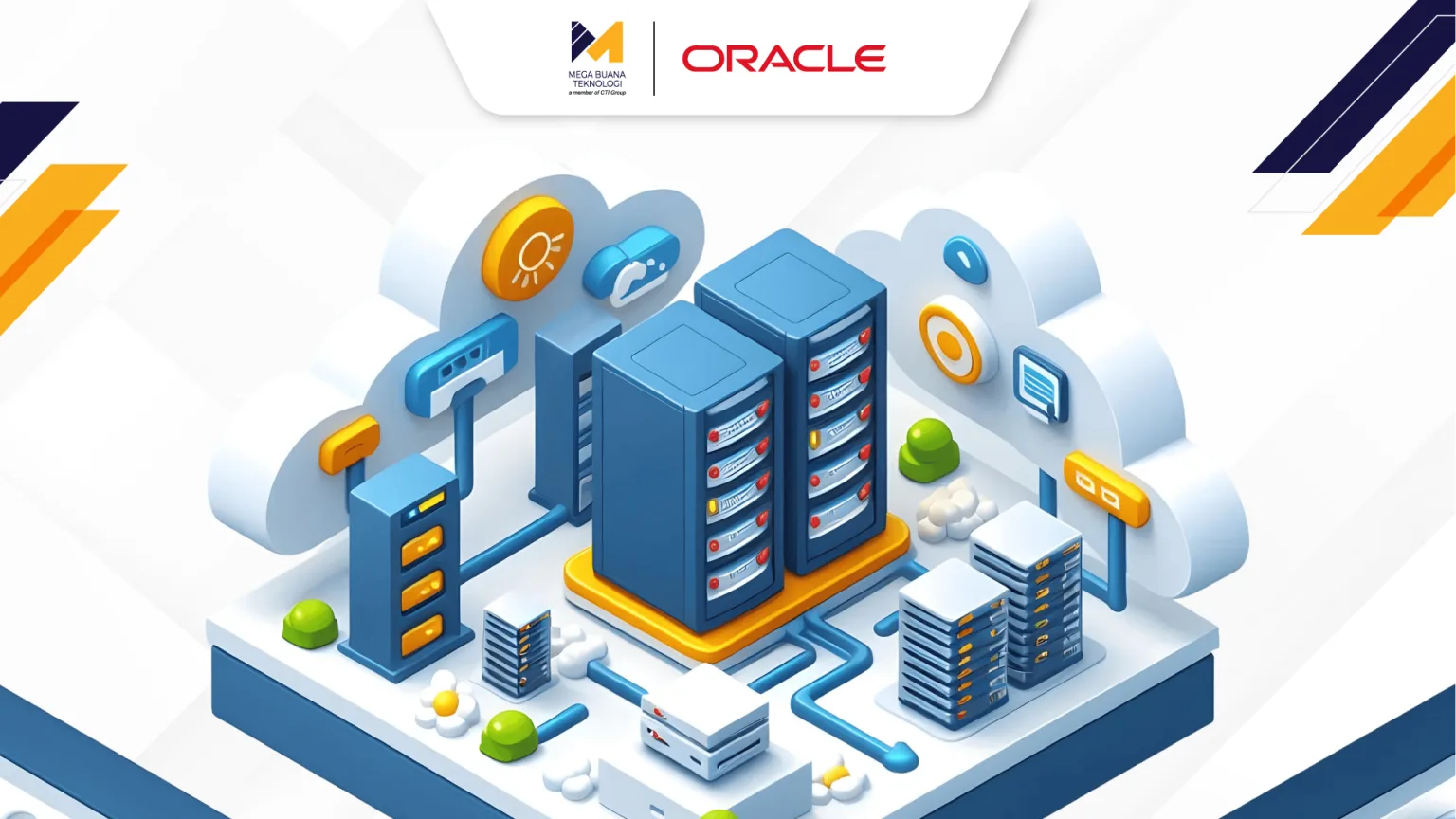Digital transformation has completely reshaped how companies manage their IT systems. Amid this rapid evolution, cloud infrastructure has become the backbone enabling businesses to operate more efficiently, flexibly, and at scale. It’s no surprise that more organizations are shifting from traditional on-premises infrastructure to cloud-based solutions to drive sustainable growth and innovation.
According to Canalys (Q2 2025), global spending on cloud infrastructure services grew by 22% YoY, reaching US$95.3 billion. This growth underscores that cloud technology is now the cornerstone of the digital era. For businesses in Indonesia, understanding and adopting cloud infrastructure is no longer optional, it’s a strategic necessity to remain competitive
What Is Cloud Infrastructure ?
Cloud infrastructure encompasses virtual computing resources accessible via the internet, effectively replacing traditional physical hardware and data centers. This includes virtual servers, storage systems, networking capabilities, and various computing services, all managed by cloud service providers and available on-demand to meet business requirements.
The distinction between cloud and conventional IT infrastructure lies primarily in flexibility. Organizations can adjust capacity in response to changing demands, pay only for resources consumed, and access advanced technologies without the burden of regular hardware upgrades. This consumption-based model enables businesses to optimize operational expenses while maintaining consistent system performance.
Core Components of Cloud Infrastructure
Cloud infrastructure integrates several fundamental components that function as a unified system:
Compute Resources
Virtual servers that execute applications and process workloads. These resources scale dynamically, accommodating everything from small-scale operations to high-performance computing requirements.
Storage
Scalable storage solutions designed for different use cases: object storage for unstructured data, block storage for performance-intensive applications, and file storage for cross-system data sharing.
Networking
Virtual network infrastructure that connects cloud components, incorporating load balancers and content delivery networks to ensure secure and efficient connectivity.
Virtualization
The underlying technology that creates virtual instances of physical resources, maximizing hardware utilization while providing operational flexibility.
Three Cloud Service Models: SaaS, PaaS, and IaaS
Cloud infrastructure operates through three distinct service models, each addressing specific organizational needs:
Infrastructure as a Service (IaaS)
Provides fundamental IT infrastructure including servers, storage, and networking. Organizations retain full control over operating systems and applications, making this model suitable for businesses requiring extensive customization and flexibility.
Platform as a Service (PaaS)
Delivers a complete development and deployment environment without the complexity of infrastructure management. This allows development teams to focus on application creation and innovation rather than underlying systems.
Software as a Service (SaaS)
Offers fully managed software applications accessible through web browsers. Users can access these applications without handling installation or maintenance, streamlining software deployment across organizations.
Cloud Infrastructure Deployment Models
Organizations can choose from several deployment models based on their specific requirements:
Public Cloud
Shared infrastructure serving multiple organizations, offering high scalability and cost efficiency. This model works well for standard workloads that don’t require extensive customization.
Private Cloud
Dedicated infrastructure for a single organization, providing enhanced control and security. This approach suits industries with stringent regulatory requirements, such as financial services and healthcare.
Hybrid Cloud
Combines public and private cloud environments, enabling organizations to optimize workload placement and costs while maintaining operational flexibility.
Multi-Cloud
Utilizes services from multiple cloud providers, reducing dependency on a single vendor, and allowing organizations to select optimal services from different platforms.
Strategic Benefits of Cloud Infrastructure
Organizations adopting cloud infrastructure gain several strategic advantages:
Cost Efficiency
The pay-as-you-go model eliminates large capital expenditures on hardware while reducing operational costs. Organizations pay only for the resources they consume, improving budget predictability and control.
Scalability
Resources can be adjusted instantly to match demand fluctuations, ensuring optimal performance without over-provisioning or unnecessary infrastructure investments.
Accessibility
Data and applications become accessible from any location with internet connectivity, supporting distributed teams, and remote work arrangements.
Rapid Deployment
IT resources can be provisioned within minutes rather than weeks, accelerating time-to-market for new products and services.
Business Continuity
Automated backup systems and geographic redundancy help ensure operational continuity during disruptions, with significantly faster recovery times compared to traditional infrastructure.
Oracle Cloud Infrastructure: MBT’s Enterprise Solution
Oracle Cloud Infrastructure (OCI) combines high performance with cost optimization for enterprise workloads. The platform delivers more than three times better price performance for computer operations compared to competing solutions.
The economic advantages are substantial: OCI’s private network connectivity costs 74% less than alternatives, while High Performance Computing workloads run at comparable performance levels but with 44% lower costs. Key features include:
Cost Efficiency
Transparent pricing structures help organizations optimize IT budgets while maintaining enterprise-grade performance standards.
Global Infrastructure
An extensive network of data centers with low latency ensures consistent performance across geographic locations.
Hybrid Cloud Compatibility
Seamless integration between on-premises and cloud environments facilitates gradual migration without operational disruption.
Developer Tools
Comprehensive APIs and development tools streamline application development and deployment processes.
OCI’s capabilities extend across multiple domains: High Performance Computing supports intensive workloads including AI/ML and big data analytics. Scalable Storage Solutions range from object storage to high-performance block volumes.
Advanced Networking Capabilities provide secure, high-bandwidth connectivity. Security Features include end-to-end encryption and compliance with international standards. Database Solutions encompass Oracle Autonomous Database, which offers self-managing, self-securing, and self-repairing capabilities.
Building Your Digital Future from the Right Infrastructure with MBT
Cloud infrastructure has emerged as a critical enabler of digital transformation, allowing organizations to operate more efficiently and innovate continuously. A clear understanding of cloud components, service models, and strategic benefits enables informed decision-making about cloud adoption aligned with business objectives. This represents not merely a technological upgrade, but a foundational investment in long-term organizational growth.
Mega Buana Technology (MBT), part of CTI Group, combines world-class technology solutions with local market expertise to support organizations throughout their cloud journey. From initial consultation through implementation and ongoing support, MBT ensures smooth cloud transitions that deliver measurable business value.
Interested in optimizing your IT infrastructure with cloud technology? Contact MBT’s team to explore how Oracle Cloud Infrastructure can support your organization’s growth in the digital era.
Author: Jeko Iqbal Reza – Content Writer CTI Group




